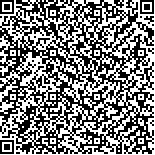王苇,漆剑频,夏业玲,黄晓琳,李文迅,王承缘.人脑运动皮质对针刺足三里和阳陵泉反应的功能性磁共振成像研究[J].中华物理医学与康复杂志,2004,(8):
扫码阅读全文

|
| 人脑运动皮质对针刺足三里和阳陵泉反应的功能性磁共振成像研究 |
|
| |
| DOI: |
| 中文关键词: 针刺 磁共振 脑 |
| 英文关键词: Acupuncture Functional magnetic resonance imaging Brain |
| 基金项目:湖北省科技攻关基金资助项目(No.2001AA301043) |
|
| 摘要点击次数: 1533 |
| 全文下载次数: 1481 |
| 中文摘要: |
| 目的利用功能性磁共振成像(fMRI)技术观察人脑运动皮质对针刺足三里和阳陵泉穴的反应,对针刺神经机制进行初步探讨。 方法对20名健康志愿者(正常对照组)和17例左侧中央沟区病变导致运动障碍的患者(运动障碍组)行实时动态fMRI检查。每名志愿者分别接受以下两项任务:①右手对指运动,②被针刺右侧足三里和阳陵泉。对激活的运动皮质功能区进行计数。采用SAS软件包作精确概率法比较两项任务激活各运动功能区的概率。运动障碍组均接受针刺任务,观察病变周围fMRI信号变化情况。 结果在正常对照组对指任务时,除去1例合作不好外,其余19例激活右侧第一运动皮质区(RMI)8例,右侧运动前区(RPMC)8例,副运动区(SMA)9例,左侧第一运动皮质区(LMI)19例,左侧运动前区(LPMC)9例:针刺任务时,除去4例运动图像伪影明显外,其余16例激活RMI 7例,RPMC 11例,SMA 9例,LMI 11例,LPMC 13例。对指运动激活LMI概率(100%)较针刺(68.75%)高(P<0.05);其余各运动功能区激活概率差异无显著性(P>0.05)。运动障碍组接受针刺任务时,在fMRI脑功能图的整个上额叶均可见明显的功能激活区。 结论fMRI证实运动皮质对针刺足三里和阳陵泉穴存在广泛的反应,人脑的这种反应可能为针刺效应的重要机制。磁共振脑功能成像在针刺机制的研究方面具有重要价值。 |
| 英文摘要: |
| Objective To characterize the human motor cortex reaction on acupuncture stimulations of Zusanli(S36) and Yanglingquan(G34) by using real time imaging processing functional magnetic resonance imaging(fMRI). MethodsfMRI was performed in 20 healthy volunteers and 17 patients with limb motion impairment caused by lesions in central sulcus area. The healthy volunteers were asked to perform two tasks: being acupunctured at acupoints of S36 and G34 (on the right side) and doing digital opposition movement of the right hand. The region of interest (ROI) was detected by fMRI, including the right and left primary motor cortex (RMI and LMI), premotor cortex(RPMC and LPMC) and the supplementary motor area(SMA). Only the ROI in which CC≥0.6 and range exceeds 4 pixels was counted as an activated area. All the patients were punctured at S36 and G34 and the observation of changes of the surrounding area of the lesion site was conducted through fMRI. ResultsOf the 20 volunteers, functional MR images were obtained in 19 volunteers while doing the digital opposition movement task except one subject who failed doing so,showing the activation of RMI in 8 subjects,RPMC in 8,SMA in 9,LMI in 19,LPMC in 9. While being acupunctured, the fMR images of 4 volunteers were abandoned due to gross motion artifacts. For the remaining 16 subjects, activation was shown of RMI in 7 subjects,of RPMC in 11,of SMA in 9,of LMI in 11 and of LPMC in 13 subjects. The possibility of RMI activation by acupuncture was higher than by digital opposition movement(P<0.05). However, there was no significant difference between the acupuncture and digital opposition movement with regard to the activation of the other ROIs(P>0.05). In all the 17 patients, acupuncture at S36 and G34 obviously activated the areas surrounding the lesion site as shown with the fMRI brain mapping. ConclusionfMRI demonstrated the widely distributed response in human motor cortex to acupuncture at S36 and G34. These findings may shed light on the CNS mechanism of acupuncture effect. fMRI is valuable in exploring acupuncture mechanisms. |
|
查看全文
查看/发表评论 下载PDF阅读器 |
| 关闭 |